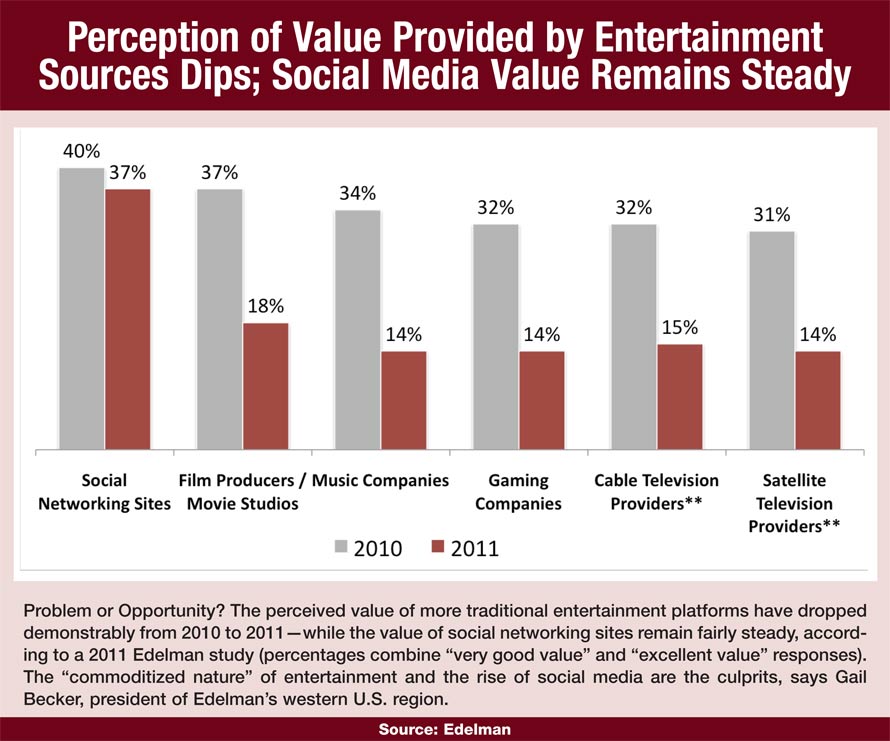â–¶ Internal Comms Needs Work: According to the first annual Workplace Communications Impact Survey—conducted online in September 2010 and released in June 2011 by Harris Interactive and Yammer Inc. — companies still have a long way to go in improving internal communications and collaboration. This survey of more than 1,000 adult workers shows that communication bottlenecks have a direct impact on employee productivity, and that the majority of employees do not feel valued by their company or comfortable sharing ideas or feedback with senior management. Specific findings include:
• Most employees don’t think their company excels at internal communications: 15% say their company is not at all effective at internal communications, while just 8% say their company is extremely effective at internal communications, including sharing company goals, timelines and plans.
• Communication gaps have the most significant impact on worker productivity: 34% say that communication bottlenecks negatively impact their productivity at work; 30% of these adults said they do not have all the information needed to do their jobs; and 22% say that long, ineffective meetings negatively affect their productivity.
• Workers uncomfortable with management: 60% of the respondents say they are extremely or very comfortable sharing ideas, suggestions or feedback with colleagues; however, only 35% say they are extremely or very comfortable sharing ideas, suggestions or feedback with executive or C-level management.
• Respect for management low: While 52% say they respect their co-workers, 39% say they respect their managers. Twenty-nine percent say they learn a lot from co-workers, versus 19% from managers.
Source: Harris Interactive/Yammer
 |
â–¶ Pay TV and the Y Generation: Can cable marketers and PR pros keep young subscribers from canceling their pay TV service? A study of Gen Y-ers by consultancy Ideas & Solutions finds that 60% of respondents are seriously considering “cutting the cord” to their pay TV subscriptions (see related Edelman research in the chart on this page). Other study findings include:
• Segmented into “Loyalists,” “Leaners” and “At-Risk” categories, 69% of the At-Risk responders and 61% of the Leaners cite the expense as the main reason they would consider discontinuing their pay TV service. That reason is cited far more than “Other ways I can watch entertainment content,” which is given by 36% and 35% of the At-Risk and Leaner respondents, respectively.
• Of those deemed most at risk of cord-cutting, nearly 50% use Netflix and Hulu, while only 29% of Loyalists use Netflix and 25% watch TV via Hulu. Among Leaners, 42% use Netflix and Hulu.
• Convenience factors rank as a major reason for many subscribers to keep their service. Viewers prefer paying their bills in a single lump sum and enjoy the “communal” aspects of pay TV, as well as the “stumble upon” experience of browsing the channels.
• Fans of sports programming are much more likely to be loyal customers.
• In qualitative interviews, many of those who have already moved away from pay TV said they may, in fact, return if their lifestyle situations changed and providers were more attuned to their preferences. PRN
Source: Ideas & Solutions
